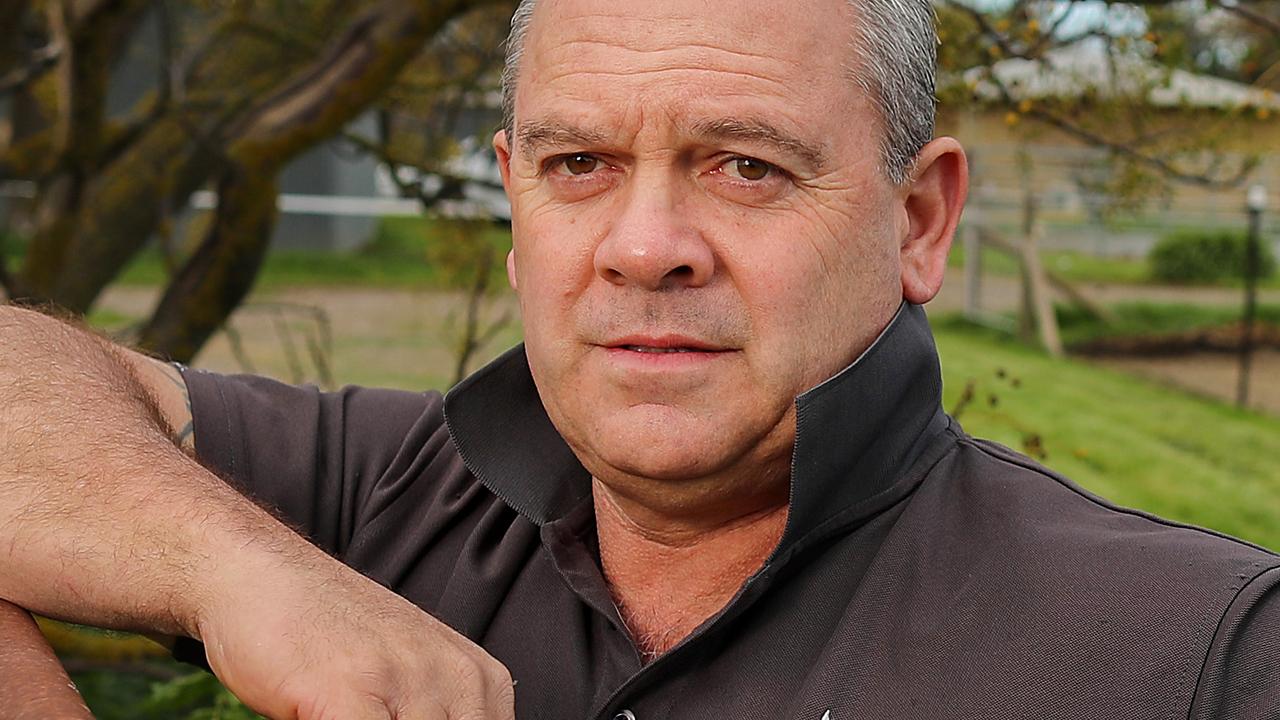Why the Great Bookie Robbery remains one of Melbourne’s greatest heists
The Great Bookie Robbery remains one of Melbourne’s greatest heists — and bagged millions of dollars. But who was the insider who tipped off the gang of bandits?
Andrew Rule
Don't miss out on the headlines from Andrew Rule. Followed categories will be added to My News.
For the bookie robbers, it was jackpot day. They appeared as if from nowhere, taking everyone in the Victoria Club by surprise — except, perhaps, for one mystery man.
The first thing one bandit did was to jam a chair in the door of the lift so it wouldn’t move, giving them precious minutes to do what they’d trained for weeks to perform with ruthless efficiency.
The suddenly faulty lift explains why the club’s chairman, Michael Stewart, wasn’t up on the second floor with a machinegun pointed at him when Australia’s heist of the century was going down on April 21, 1976.
While five robbers cut open cash boxes and stuffed millions of dollars into bags and another waved a machinegun over a bunch of unhappy bookmakers ordered to lie face down, Stewart was still downstairs, mildly irritated about the dodgy lift.
THE UNSOLVED MELBOURNE CRIME THAT BAGGED MILLIONS
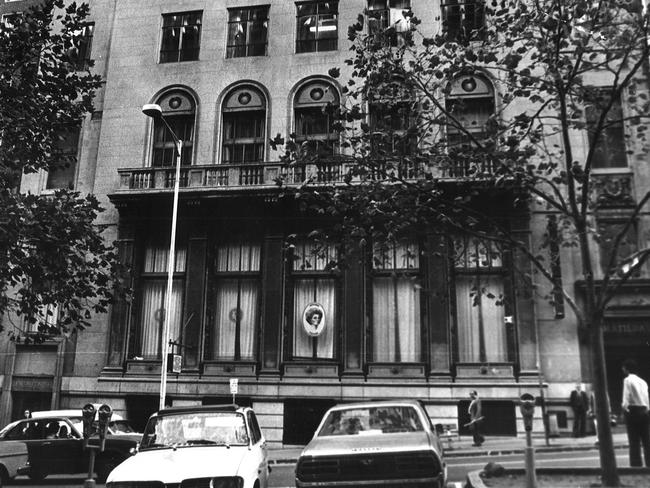
Minutes later, it was all over — at least for the victims, left to count their losses, estimates of which range from the official $1.4 million to wild figures of up to $15 million.
SUBSCRIBE TO LIFE AND CRIMES ON iTUNES, SPOTIFY OR WEB
A young bookie’s clerk who made sure he stuck his face well into the carpet that day later estimated there was more than $1.4 million, but no more than double that amount. But the son of a middleweight bookmaker whose cash box was insured for $10,000 says his father in fact probably lost around $38,000 (“he didn’t want to pay the bigger insurance premiums”) so he wonders if the robbers scored three to five times the official amount.
But even a conservative figure of $2 million would have made a massive haul in 1976 — weekly wages were around $100 and some Melbourne houses sold for $20,000.
The bookies had not been injured, they had at least some insurance cover and a story to dine out on for the rest of their lives. Some who had nothing but loose change in their cash boxes were very happy to get their $10,000 in insurance. But for the bandits, the trouble was just beginning. It seems most would die violently because of the heist.

It is part of Australian crime legend that the bookie robbers became targets not just of law enforcement but of corrupt police and other predators in the dog-eat-dog underworld.
There were six robbers in the Victoria Club, and probably a couple more elsewhere, including one member of the crew who reputedly got his share even though he was unavoidably detained (in jail) on the day.
Some say the late Dennis “Fatty” Smith drove the laundry van supposedly used to haul away the cash — and that the fat man was also at the wheel two years later on the night the alleged bookie robbers Raymond Patrick Bennett (alias Ray Chuck), Lawrie Prendergast and Vinnie Mikkelsen were accused of disposing of their enemy Les Kane before he got them.
Kane’s body was never found and neither was his pink Ford Futura, but his family and friends had no doubt about his fate or who was responsible. That’s why Bennett was shot dead in Melbourne Magistrates’ Court in late 1979, a hit never officially solved but widely credited to Les’s brother, Brian Kane — who, in turn, was shot in revenge as the vendetta stretched into the 1980s.

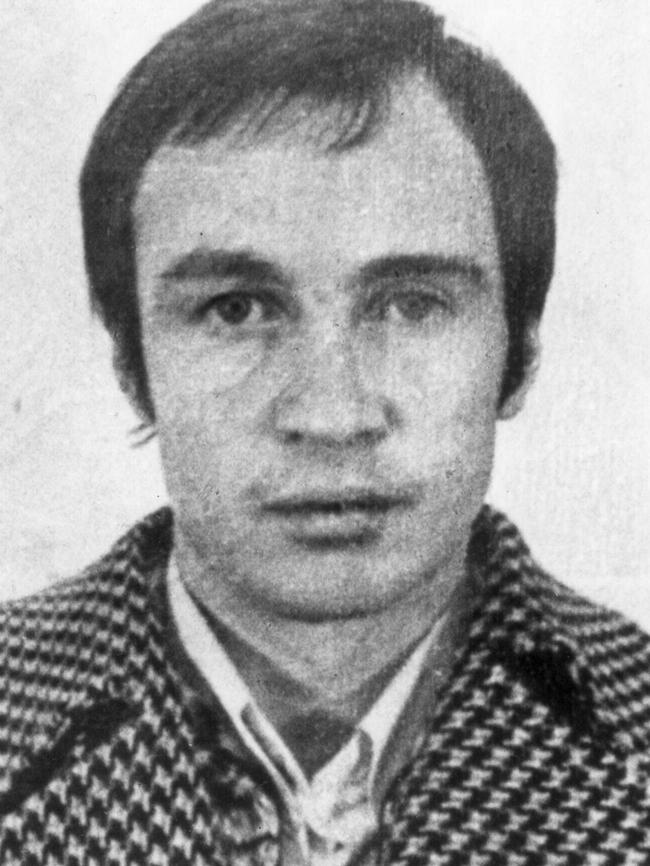
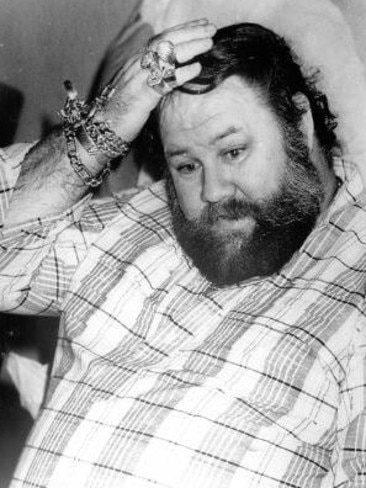
Prendergast also vanished, no doubt murdered, although Mikkelsen quietly reappeared in Melbourne after a couple of decades “in smoke”, reputedly in distant corners of Western Australia.
Another version of the bookie robbery was revealed much later, long after the death of another suspected robber, Normie Lee, shot dead by police during a foiled $1 million robbery at Melbourne Airport in 1992.
Lee, Bennett’s close ally, ran a dim sim factory in Essendon where, legend has it, bodies of gangland figures vanished into the mincer. He was the only person actually charged over the bookie robbery, though not convicted, because he was found with some cash from the robbery.
Lee once suggested to his lawyer, Phil Dunn, that the bookie robbers had rented an office above the Victoria Club and hid the cash there while police threw their efforts into tracing the laundry van, supposedly driven off empty as a “throw-off”.
But the missing link in all this is the “inside man”. The one that had passed on specific knowledge not only of the casual way the huge amount of cash was guarded but of the strange layout of the building and the one next to it.
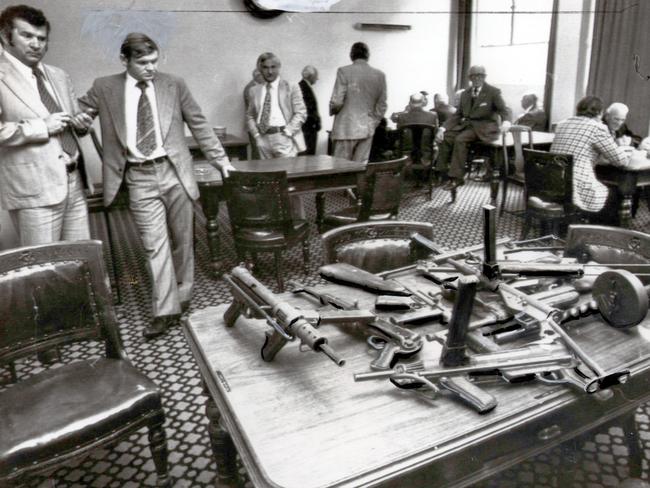
Michael Stewart is now a retired grandfather, writing his memoirs in a country town. In 1976 he was a city lawyer whose practice linked him with the racing world.
Lawyers interested in racing tended to join the Victoria Club to rub shoulders with bookmakers and other racing identities. Stewart loved racing and the industry’s characters, but has waited more than 40 years to write a detailed account he says will reveal unknown and overlooked details of the Great Bookie Robbery.
He believes “an insider” tipped off the gang to key information and is confident he knows who it was. His suspicions about the man’s identity hardened after he compared notes with a legal identity also linked to the club in the 1970s.
It was common knowledge the Victoria Club was where bookies and big punters “settled” after city race meetings. People in those circles would know that banks were not open over the Easter holiday break, meaning all their cash holdings had to be held in security cashboxes until the “settling up” at the club on the Wednesday, when an armoured car delivered the cash boxes. The Easter settling was a ready-made jackpot for would-be robbers.
But the meticulous robbery plan, which included a commando-style training camp near Trentham, still needed more than nerve, timing and guns. It needed a detail known only to those who knew the club.
HOW CHOPS LEE DODGED TIME OVER BOOKIE ROBBERY
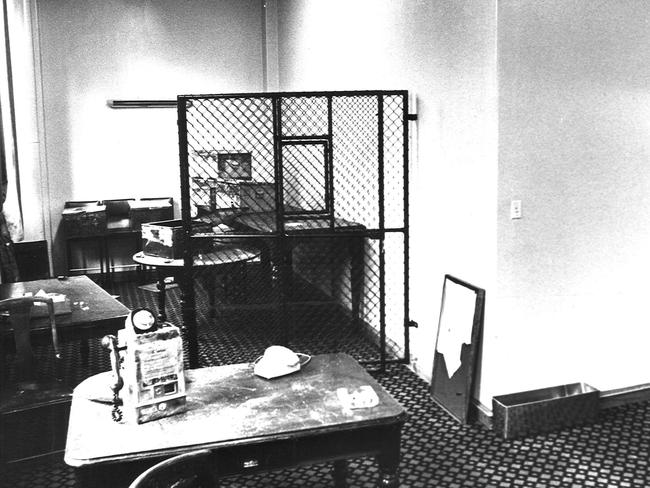
Stewart says you could be around the club for years and not realise there was an unused “secret” door — virtually invisible from inside — connecting the club’s second-floor bar, billiard room and settling room with the third floor of the building next door.
On the Victoria Club side, the door was flat and featureless, painted the same colour as the walls. On the other side, in the neighbouring building, it opened into a tiny unused space outside the lift well. It was bolted top and bottom.
The door no longer served a purpose. It had been installed maybe as a temporary access for tradesmen during the construction of an extra five storeys above the club years earlier. The lift next to the door did not stop on that floor; anyone who wanted to get to the door from outside the club had to climb the internal fire escape stairs in the neighbouring building.
Which is exactly what the robbers did on Easter Sunday, three days before the robbery. They cut through the top bolt but couldn’t get enough room to cut the bottom one, so they carved a deep gouge in the floor to allow the bolt to be dragged along.
All this became clear after the event. Stewart says he and shaken club members were waiting for police to arrive when someone noticed the painted-over door behind the bar was ajar.
So who passed on the inside information?

Stewart (and a judicial figure whose name can’t be published) believes it was a small businessman and big punter who had insinuated himself into the club over the previous year.
The man — let’s call him MacGuffin, not his real name — was friendly, a good talker and a good listener. He was also alert and observant, according to Stewart.
“He was never really one of us but he made sure he turned up for a drink every night and joined in,” says the old lawyer. “But we didn’t see him again after the robbery.”
His theory tallies with other information that the robbery was a meticulous conspiracy involving several people apart from those with masks and guns.
The late Billy “The Texan” Longley, a painter and docker gunman who killed many people but was convicted of only one, once told this reporter he had been approached well before 1976 by a Victoria Club insider to “shop around” the robbery.
This tied in with the long-held suspicion that a senior police officer contrived that key crime squad detectives be sent out of the city to chase a false alarm just before the cash was delivered on that “jackpot” Wednesday.
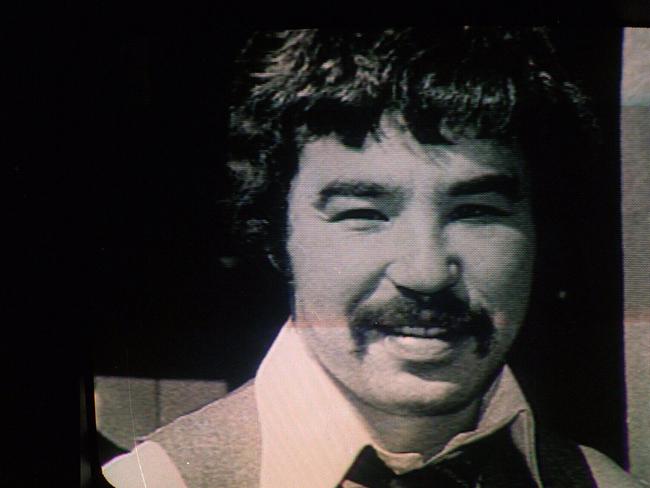
That officer (now probably dead) would have known that certain detectives were paid unofficially to shadow cash deliveries to the club so it was vital that on that Easter settling day they were diverted at the last minute. Otherwise, the heist might have turned into a bloodbath.
Interestingly, the supposedly accommodating cop was named in the Abortion Inquiry that resulted in the disgrace and jailing of other senior policemen. He was related to a prominent illegal abortionist and rumoured to play a part in the protection racket, but nothing was ever proved and his career flourished.
And “MacGuffin” the insider?
He was rumoured to have moved interstate with enough funds to set up a travel business. He knew a lot of punters loved to travel and there’s no greater punter than an armed robber.


